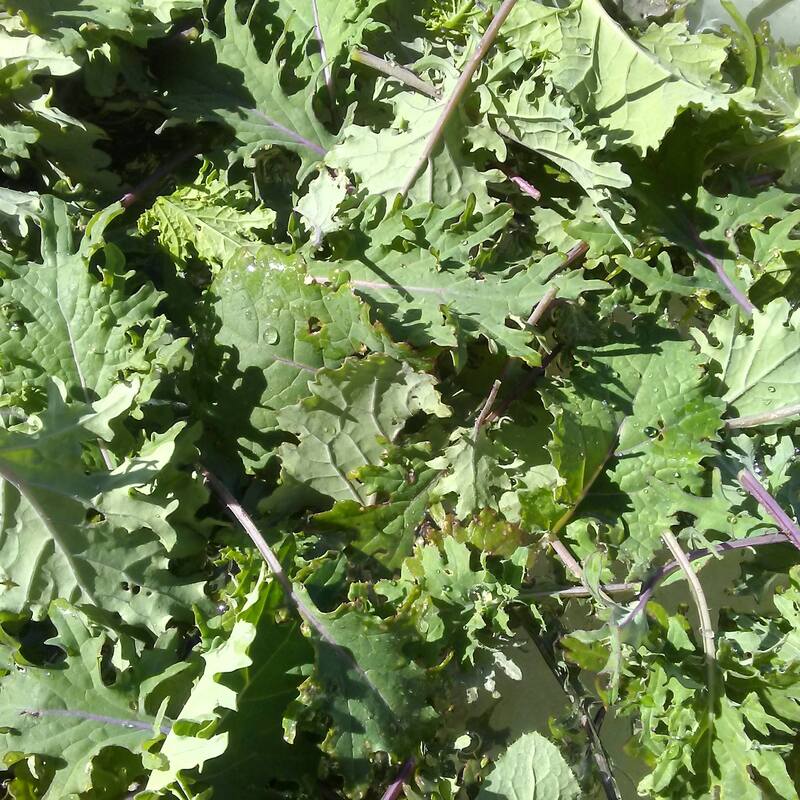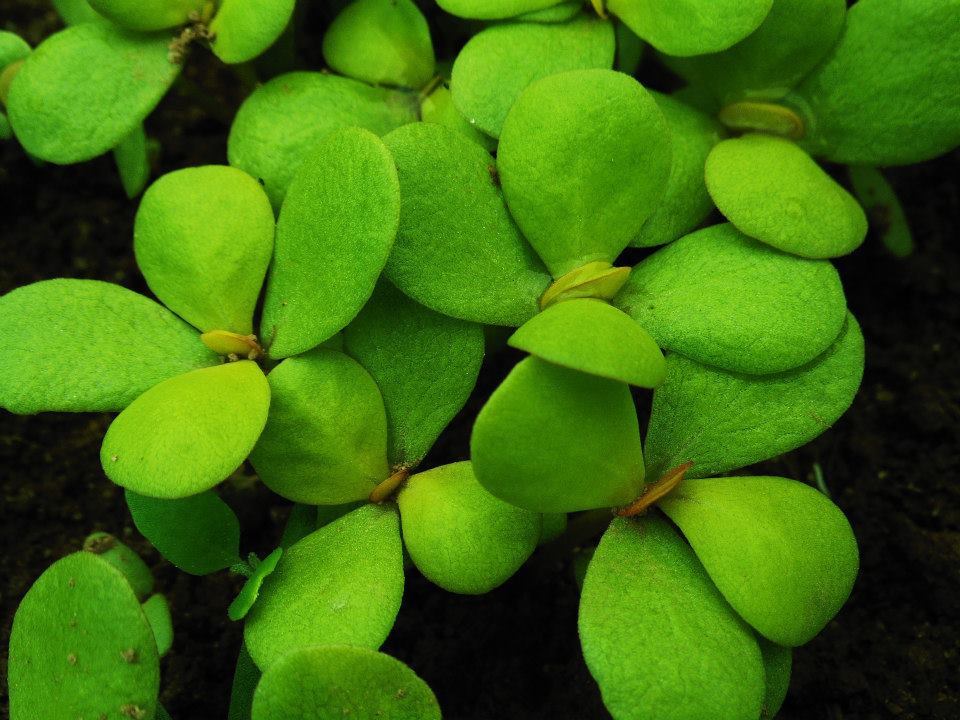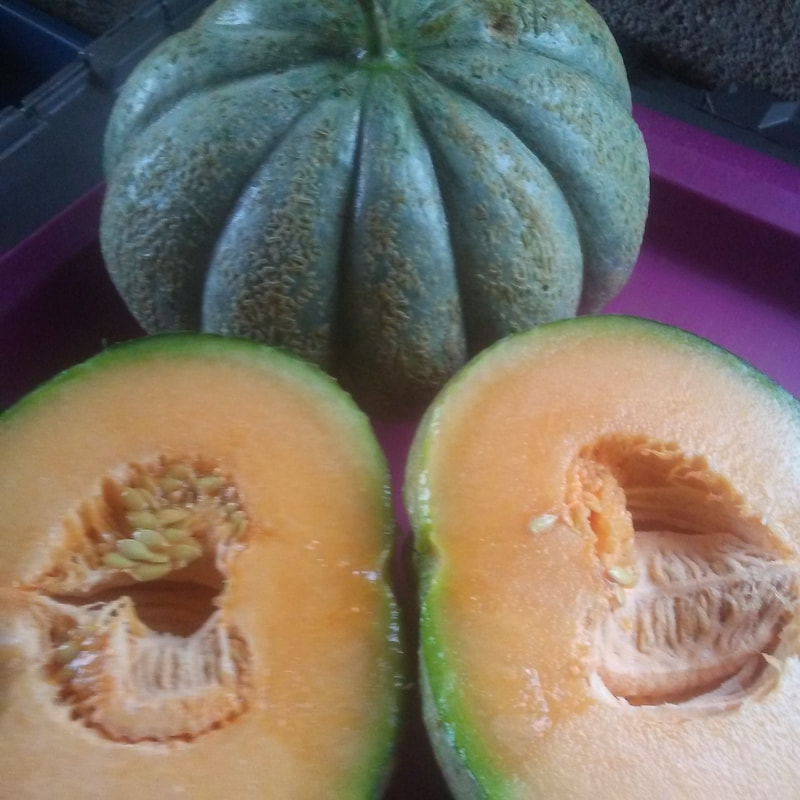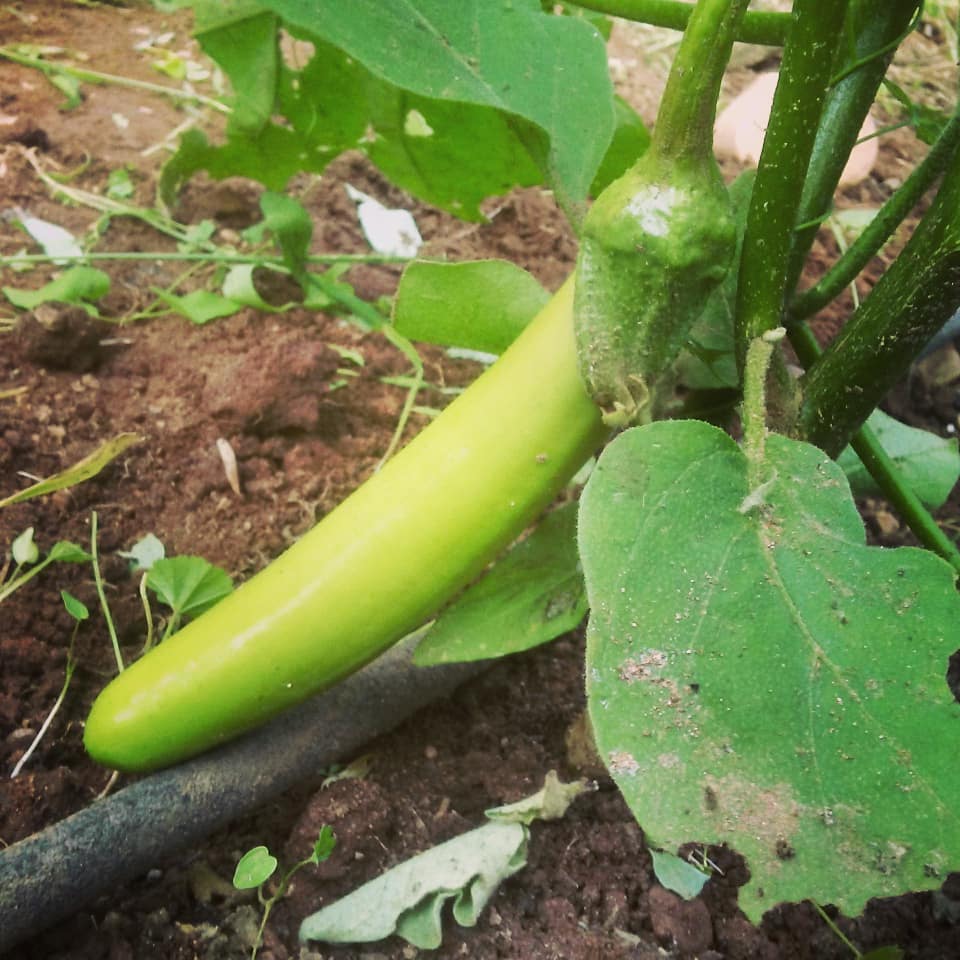Red Russian KaleRed Russian Kale - a tender, tasty and extremely cold hardy heirloom kale. This kale was one of the first veggies we ever grew on the farm and it remains one of our all-time favourites. This amazing kale can survive snow, ice, freezing temperatures... anything winter can throw at it, and it'll last under the snow for a long time, only to start growing new leaves in the spring. They get sweeter in colder weather as well. It's the most tender kale we grow so it's great for eating raw in salads and sandwiches as well as for cooking. Kale is great to save seeds from, they are biennials which means they need a winter rest before they'll flower the second spring. They produce many bright yellow flowers which the bees love and then when pollinated make little bean-like seed pods. Once these seed pods turn brown and dry out, and they rattle when you shake them then they're ready to harvest for seed (mid-summer usually). I use an empty garbage bag, put it over the seed pods and shake them into the bag, the seeds are very small, round and black. Then you have your own seeds that you can plant outside anytime from spring to early fall! We've been saving seeds from these for many years now and over time come of the leaf shapes have changed a bit, becoming wider and less like an oak-leaf shape. I've wondered if this means they've crossed with rutabaga which has a similar shaped leaf and is the same species as Russian Kale. Either way, the kale tastes great and always does well on our farm, in fact even if we don't harvest the seeds one year they self-seed and we get them anyway! There's a back corner of one field that has basically been taken over by them, which we're fine with. We know kale is not everyone's cup of tea but we love it! It's a great source of nutrition that can be harvested fresh almost year-round. Cincinnati RadishCincinnati Radish - a nice carrot-shaped radish with a long history. Cincinnati radishes have been around at least since the 1800s, when they were fairly common to find in seed catalogs. They are now becoming quite rare and it's hard to understand why - they grow fast, they have a great juicy, crisp and spicy radish taste, and you get more from each radish! They're very tender and easy to slice up and throw into salad and wraps, and less sulphury than a lot of radishes so are a bit milder. They turned out to be one of our new favourites this year (though, truth be told, we are a little radish obsessed!). They store in the fridge better than other "spring/summer" radishes, however not as long as the "winter" radishes. Looking forward to growing these again! Russet ApplesRusset Apples - a delicious heirloom apple with unusual skin. These apples have a rough brown skin covering a crisp, sweet, complex flavoured inside. They have always been my favourite apple since I was a kid, and would pick them on walks around the farm. We have around 7 old trees that had become quite large and overgrown and were part of cow pasture for several decades so have had the benefit of lots of manure for nutrition. A few years ago me and my dad cut down the other trees that had grown up around them and were shading them out, and I started pruning them (as much as I could reach with a ladder- they're quite tall) to try to rejuvenate them a bit. They're still quite productive despite being shaded by much taller trees for so long; we get enough to get some to the CSA and market every year. There's a lot of history with apples on the farm, my grandparents had quite an orchard at one point (interplanted with potatoes which I found interesting). My grandfather would press cider in the basement of the farm house and there's still the parts to the cider press down there. The main part of the orchard that's left is seasonally pastured by my uncle David's cattle, who eagerly await the apple drops every fall... you can tell because they drool and their eyes get quite big! The ones that are left from that orchard are some red delicious, northern spy, macintosh and I believe one called king? I'm not well versed in apples so maybe if some of my family members are reading this they could chime in here. We also have lots of wild apple trees that have sprung up along field and forest edges, these are from seeds either from people throwing cores away or from animals leaving behind part of their meals. Most of the apples from these trees aren't very tasty or really even sweet (so end up food for deer, cows and coyotes), but there are a few that are the exception that I've decided to look after a bit more with pruning and compost. One is a dark purple apple with a slightly plum-like taste and the other is a nice red one that is sweet, tangy and crunchy. These two sometimes make it into our CSA shares and market table along with the russets. Delicata SquashDelicata Squash - sweet and nutty, creamy, tender and delicious, one of the best squash out there! We can't say enough good things about this squash! It's a popular heirloom and with good reason, it's flavour can't be beat! It's thin skin makes it very easy to cook with, just cut it in half, scoop out the seeds and throw it in the oven, then it can be stuffed, mashed, cut up to make squash "fries", it's very versatile. I usually eat a half by hand simply holding it like you would a hot dog haha! They are one of the sweetest squash out there and I would recommend them to anyone who thinks they don't like squash. We've been growing delicata for as long as we've been farming and always look forward to them being one of the first types ready to harvest, usually mid-september. In our experience once they get past the seedling stage they are not bothered too much by cucumber beetles or squash bugs. They are a Dumpling type of squash which means they don't last as long in storage. I realized as I started to write this that we've grown 4 different types of delicata over the years (that's how much we love them)- the standard type, the "bush" delicata which grows the squash out of the middle of the plant like zucchini, "candystick" delicata which is tan and striped, and Johnny's Seeds "JS" type which seems to grow longer than the others. The Johnny's type is our favourite since it always seems to grow the best and has the best flavour. Candystick delicata was said to be sweeter and have a date-like flavour but we didn't find that to be true, they were still really good though, maybe drier than other delicatas. This squash was first available in seed catalogs in 1894, but was probably in home gardens long before that. Golden PurslaneGolden Purslane - a delicious and unique ancient green! Purslane is exceptionally nutritious, it contains high amounts of potassium, iron, vitamin A and C. It contains antioxidants and is the highest source of omega-2 fatty acids of any leafy green! Lots of power in this little plant. It is a succulent, so has a different texture than other greens, it is very thick-leafed, tender and juicy and has a very fresh almost lemony taste. The stem and leaves are all able to be eaten raw and go great in a salad with sprouts or in a wrap. There is a wild type of purslane that is common in Nova Scotia that is also edible and has all of these health benefits. The type we grow has larger leaves, stands more upright off the ground and is yellower. They are extremely drought tolerant because they're succulents which are mainly desert plants. Ancient people commonly used purslane as food and had spread it by seed over most of the world even in prehistoric times. It was still a common vegetable in the Roman Empire. Most cultures have traditional recipes that use this wonderful little plant. We love it's fresh, energizing taste! Oka MelonOka Melon - a juicy piece of Quebec history. Oka melons are a type of cantaloupe that were developed by monks living north of Montreal. They are quite large compared to other types and are consistently sweet, juicy and fruity flavoured - definitely the best tasting cantaloupe we've tried. Since they were bred in a cold climate they are well suited to growing in Canada's short summers and ripen more reliably than many other cantaloupes. We've saved seed from these for several years now. For the full story of the monks who bred this melon go here:https://www.thestar.com/…/quebec-monks-bring-back-melon-cre… Long Green EggplantLong Green Eggplant- a nice little eggplant with no bitterness.
These are quite different looking to the large black ones that most people are used to, they are quite small and slender, usually reaching around 8 inches. They are really tender to cook with and don't have any of the bitterness that black eggplants can have. One of my absolute favourite things to eat is these cut up into thin pieces, battered and breaded and sauteed in olive oil - just delicious. And of course moussaka is always tasty! What are your favourite eggplant recipes? We grow two types of long green eggplants, one from Thailand and one from Louisiana. They both have great flavour and we haven't really noticed much difference between them. These smaller types of eggplants tend to make up for their small size by producing more per plant which is great news. One difficulty we have growing eggplants is that the potato beetle likes their leaves almost as much as they like potatoes, we try to deter them by sprinkling wood ash on the leaves. Another difficulty with eggplants is that they tend to like hotter and drier weather (owing to their origins in India) and that can be hard to find in Nova Scotia. This leads to unpredictable weather-dependant crops but we will always grow them because we love them too much not to!
0 Comments
|
AuthorOlde Furrow Farmers!! Archives
March 2024
Categories |







 RSS Feed
RSS Feed